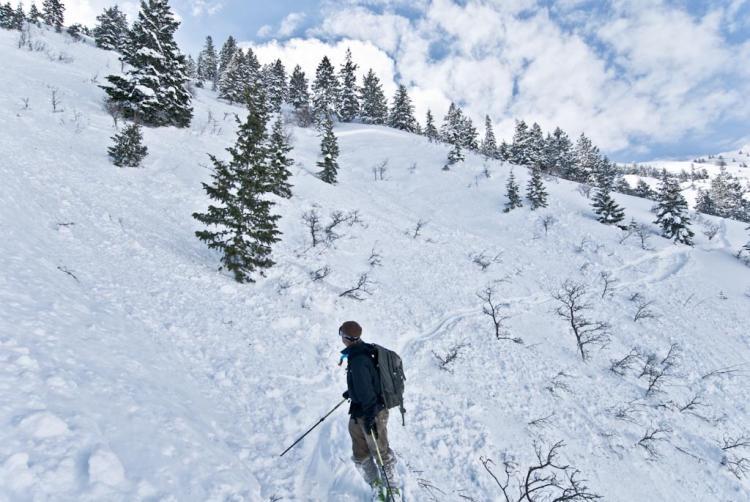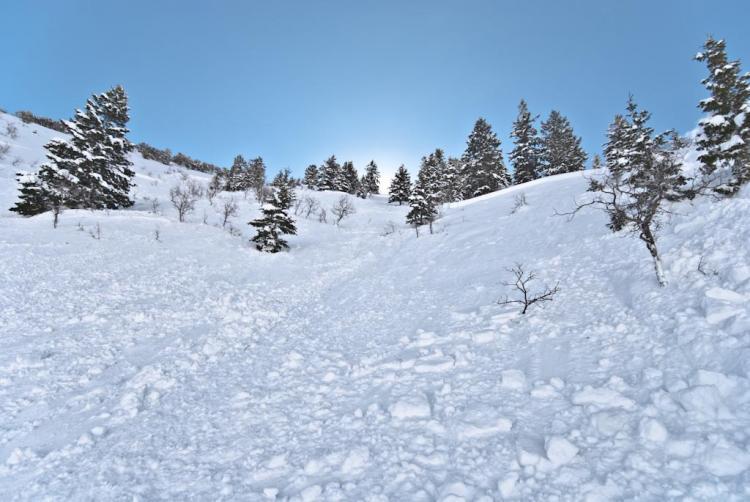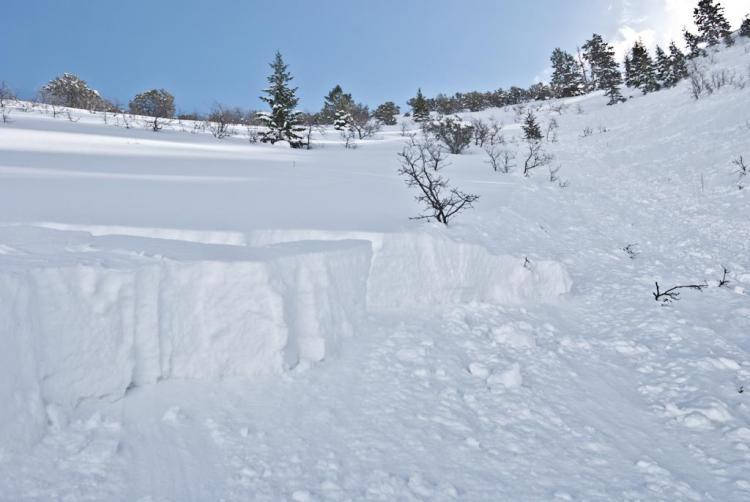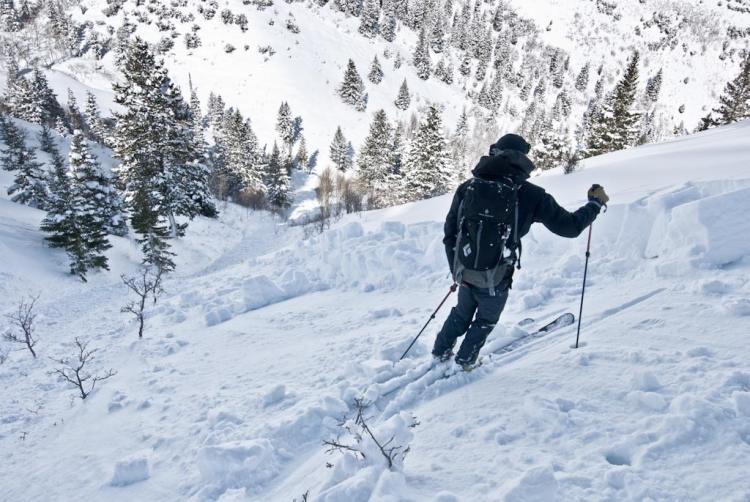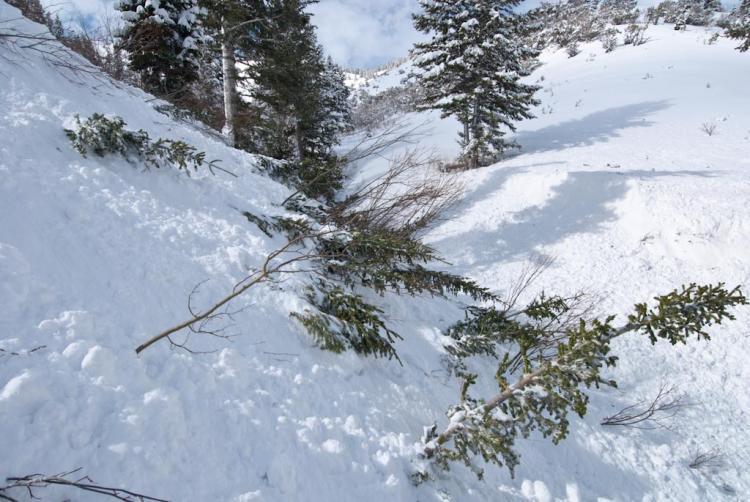Our party of four had been skiing the immediate area with signs of instability in the new snow, with whumpfing/settling and propagating cracks in the new snow layer observed while skinning up a protected ridge in timber. We had been sticking to safe areas of trees, noticing these signs when skinning up an open ridge, with more pronounced settling as we approached breakovers. We skied two runs, and then decided to traverse across a long ridge, which alternated between treed subridges and open areas to avoid skiing the southern aspect we used to enter the area, which in the time since we entered and were exiting had become quite saturated due to sun heating. We observed several point releases leading to slides on the south aspect, as well as rollerballs becoming more frequent. We had finished our second run and began the traverse along the same aspect that we had been skiing with little sign of problems. We were in areas of fairly dense tree cover with a mix of pine, aspen, and scrub oak. We then were crossing an open area between a ridge and a stand of trees one at a time when a large collapse occurred. I was on the ridge waiting to cross, and observed all of the smaller aspens shift and shed their snow load as the lead guy called out avalanche from a protected stand of pine on the next ridge, with the flank ~15 feet ahead of him. The slope broke ~200 feet above their location, propagating east and west just below the ridge line. The debris ran down the gully and into a stand of aspens, which were completely blown down. The gully terminated in a deep creek bed, which was filled, and the debris ran ~40 feet up the opposite side. Two pines at the base of the gully were completely flagged to ~20 feet above the snow surface. The debris was funneled into a relatively narrow channel of ~40 feet which really focused the force and dramatically increased the depth. The snow ran as a soft slab (F-4F), and encompassed the entirety of the recent snow event to a depth of ~75cm, running on of 1-2cm of very well defined facets on top of a rotting crust formed during the last high pressure system. The bed surface was very clean, with much of the facet layer still intact. The flank areas were marked with several cracks that propagated as much as 40 feet past the flank.
